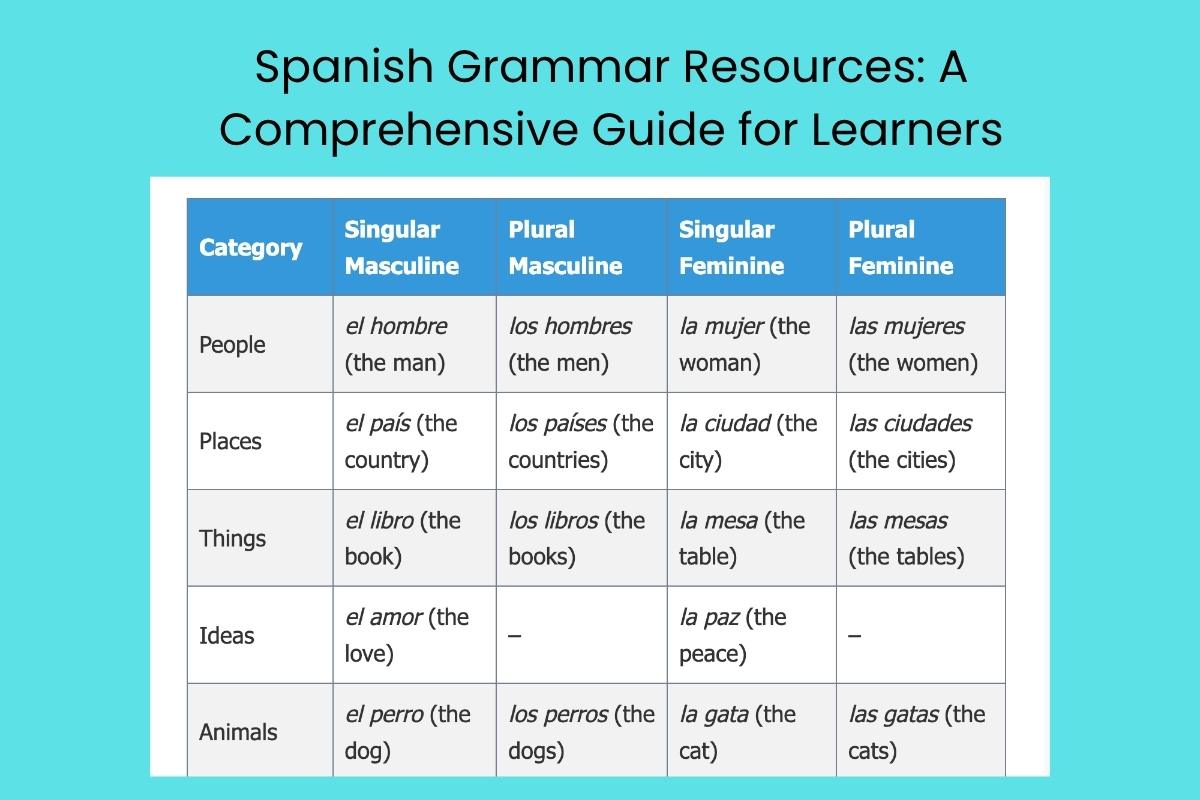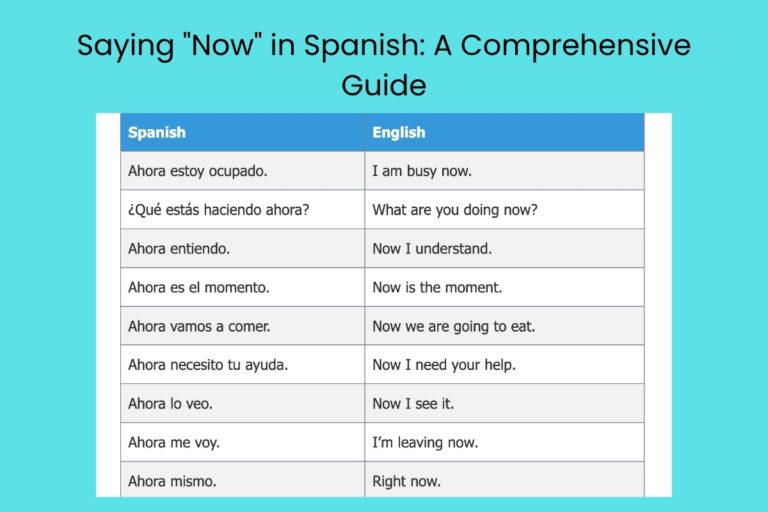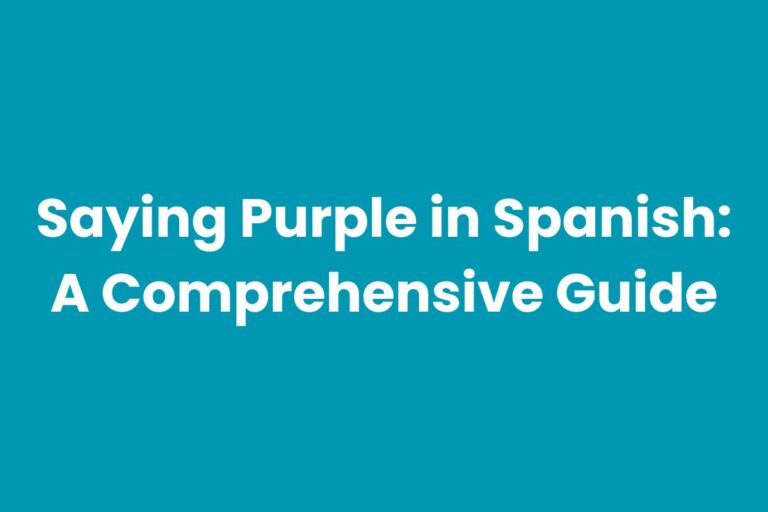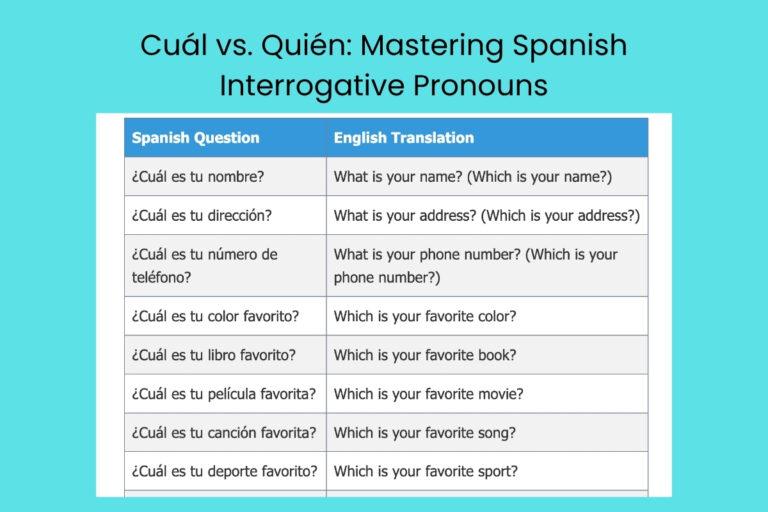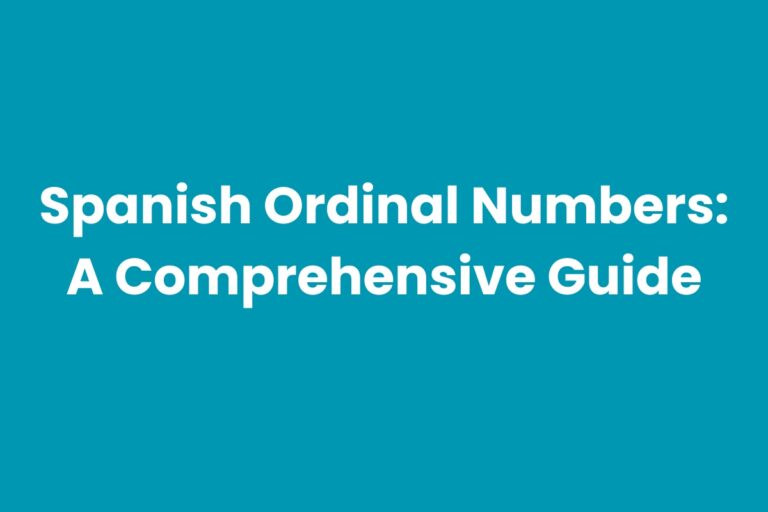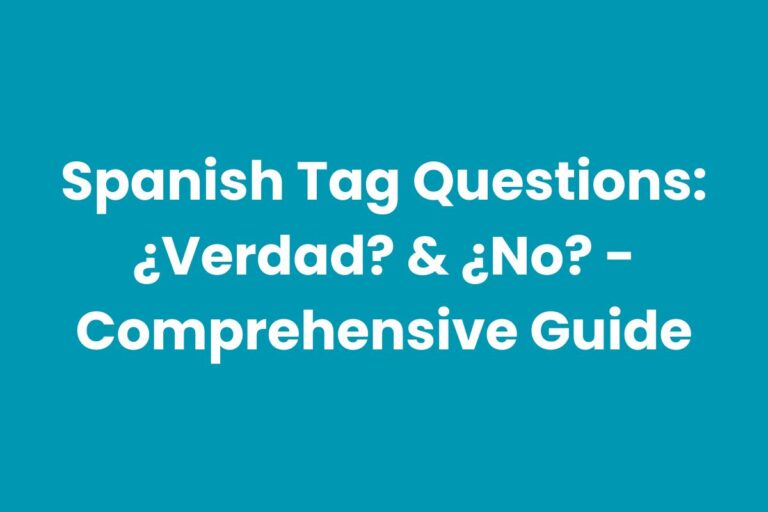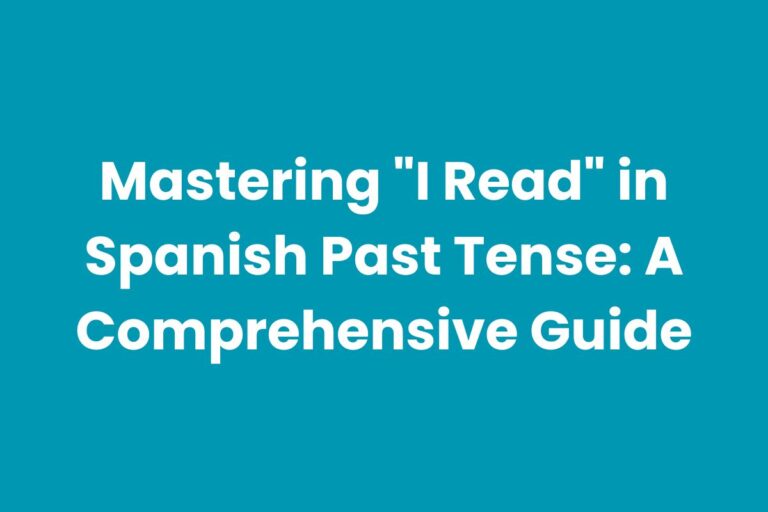Spanish Grammar Resources: A Comprehensive Guide for Learners
Mastering Spanish grammar is essential for anyone serious about learning the language. While vocabulary is crucial, a solid understanding of grammar provides the framework needed to construct meaningful sentences, express complex ideas, and truly understand native speakers.
This guide provides a comprehensive overview of the best Spanish grammar resources available, designed to help learners of all levels navigate the complexities of the language and achieve fluency. Whether you’re just starting or aiming for advanced proficiency, this article will equip you with the knowledge and tools you need to succeed.
This resource is beneficial for students, self-learners, teachers, tutors, and anyone looking to improve their Spanish language skills.
This article goes beyond simply listing resources. It delves into the core aspects of Spanish grammar, offering detailed explanations, examples, and practice exercises.
By the end of this guide, you’ll not only know where to find the best resources but also have a deeper understanding of how Spanish grammar works.
Table of Contents
- Introduction
- What is Spanish Grammar?
- Structural Breakdown of Spanish Grammar
- Key Categories in Spanish Grammar
- Examples of Spanish Grammar in Use
- Usage Rules in Spanish Grammar
- Common Mistakes in Spanish Grammar
- Practice Exercises
- Advanced Topics in Spanish Grammar
- Frequently Asked Questions
- Conclusion
What is Spanish Grammar?
Spanish grammar is the set of rules governing the structure of the Spanish language. It encompasses the morphology (word formation), syntax (sentence structure), and phonology (sound system) of the language.
Understanding Spanish grammar is crucial for constructing grammatically correct and meaningful sentences, allowing effective communication with native speakers. It’s not merely about memorizing rules; it’s about understanding how these rules work together to create a cohesive and understandable language system.
Grammar provides the framework for combining words into phrases, clauses, and sentences. Without a grasp of grammar, your ability to express ideas clearly and accurately is severely limited.
Furthermore, understanding grammar allows you to decipher the meaning behind what native speakers say and write, even when they use complex sentence structures or idiomatic expressions. In essence, grammar is the key to unlocking fluency and comprehension in Spanish.
Structural Breakdown of Spanish Grammar
Spanish grammar, like any language’s grammar, is built upon several core components that interact to form coherent sentences. These components include parts of speech, sentence structure, and verb conjugations.
Let’s explore each of these aspects to understand the fundamental building blocks of Spanish grammar.
Parts of Speech: Spanish, like English, relies on parts of speech to define the role of each word in a sentence. These include nouns, pronouns, adjectives, verbs, adverbs, prepositions, conjunctions, and interjections. Each part of speech contributes a specific function to the overall meaning and structure of the sentence. For example, nouns name people, places, things, or ideas, while verbs express actions or states of being.
Sentence Structure: The typical Spanish sentence follows a Subject-Verb-Object (SVO) structure, similar to English. However, Spanish offers more flexibility in word order, especially when dealing with pronouns or emphasis. Understanding how to arrange words effectively is crucial for conveying the intended meaning. Additionally, Spanish uses punctuation marks like commas and semicolons to create complex sentences.
Verb Conjugations: Verb conjugation is a cornerstone of Spanish grammar. Verbs change their form depending on the tense, mood, and subject. Mastering verb conjugations is essential for expressing actions accurately in different time frames and contexts. Spanish has a rich system of verb tenses, including present, past (preterite and imperfect), future, conditional, and subjunctive moods.
Key Categories in Spanish Grammar
Let’s delve into the main categories of Spanish grammar, explaining their functions and providing basic information.
Nouns (Sustantivos)
Nouns in Spanish (sustantivos) are words that name people, places, things, or ideas. They are always either masculine or feminine, which affects the articles and adjectives that modify them. Nouns also have singular and plural forms. For example, libro (book) is masculine and can be pluralized to libros (books).
Articles (Artículos)
Articles (artículos) are words that precede nouns and indicate whether the noun is specific (definite) or non-specific (indefinite). Spanish has both definite articles (el, la, los, las) and indefinite articles (un, una, unos, unas), which must agree in gender and number with the noun they modify. For example, el libro (the book) uses the masculine singular definite article el.
Pronouns (Pronombres)
Pronouns (pronombres) are words that replace nouns. Spanish pronouns include personal pronouns (yo, tú, él/ella/usted, nosotros/nosotras, vosotros/vosotras, ellos/ellas/ustedes), demonstrative pronouns (este, ese, aquel), and relative pronouns (que, quien, cual). Pronouns are used to avoid repetition and to refer to previously mentioned nouns. For example, instead of saying “Juan tiene el libro. Juan lee el libro.” you can say “Juan tiene el libro. Él lo lee.“
Adjectives (Adjetivos)
Adjectives (adjetivos) are words that describe nouns. In Spanish, adjectives usually follow the noun they modify and must agree in gender and number with the noun. For example, el libro rojo (the red book) shows the adjective rojo (red) agreeing with the masculine singular noun libro.
Verbs (Verbos)
Verbs (verbos) are words that express actions, states of being, or occurrences. Spanish verbs are highly conjugated, meaning they change form to indicate tense, mood, number, and person. There are three main verb conjugations in Spanish: -ar, -er, and -ir. Regular verbs follow predictable conjugation patterns, while irregular verbs have unique forms that must be memorized. For example, the verb hablar (to speak) is a regular -ar verb, and its conjugation varies depending on the subject pronoun and tense.
Adverbs (Adverbios)
Adverbs (adverbios) are words that modify verbs, adjectives, or other adverbs. They provide information about how, when, where, or to what extent an action is performed. Many Spanish adverbs are formed by adding the suffix -mente to the feminine form of an adjective, such as rápidamente (quickly) from rápida (quick). Other common adverbs include aquí (here), ahora (now), and muy (very).
Prepositions (Preposiciones)
Prepositions (preposiciones) are words that connect nouns or pronouns to other words in a sentence, indicating relationships such as location, direction, time, or cause. Common Spanish prepositions include a (to), de (of/from), en (in/on), para (for), and con (with). Prepositions often require careful attention because their usage may differ from English. For example, a can mean “to,” “at,” or “in,” depending on the context.
Conjunctions (Conjunciones)
Conjunctions (conjunciones) are words that connect words, phrases, or clauses. Spanish conjunctions include coordinating conjunctions (y, o, pero), which join elements of equal grammatical rank, and subordinating conjunctions (que, si, porque), which introduce dependent clauses. For example, y (and) is a coordinating conjunction, while porque (because) is a subordinating conjunction.
Examples of Spanish Grammar in Use
To solidify your understanding of Spanish grammar, let’s examine examples of each category in context.
Noun Examples
The following table provides examples of nouns in Spanish, categorized by gender and number. Understanding noun gender is crucial because it affects the articles and adjectives that modify the noun.
| Category | Singular Masculine | Plural Masculine | Singular Feminine | Plural Feminine |
|---|---|---|---|---|
| People | el hombre (the man) | los hombres (the men) | la mujer (the woman) | las mujeres (the women) |
| Places | el país (the country) | los países (the countries) | la ciudad (the city) | las ciudades (the cities) |
| Things | el libro (the book) | los libros (the books) | la mesa (the table) | las mesas (the tables) |
| Ideas | el amor (the love) | – | la paz (the peace) | – |
| Animals | el perro (the dog) | los perros (the dogs) | la gata (the cat) | las gatas (the cats) |
| Food | el pan (the bread) | – | la fruta (the fruit) | las frutas (the fruits) |
| Objects | el coche (the car) | los coches (the cars) | la casa (the house) | las casas (the houses) |
| Professions | el profesor (the professor) | los profesores (the professors) | la profesora (the professor) | las profesoras (the professors) |
| Days | el lunes (Monday) | los lunes (Mondays) | – | – |
| Months | el enero (January) | los eneros (Januarys) | – | – |
| Colors | el rojo (red) | – | la rosa (pink) | – |
| Sports | el fútbol (soccer) | – | la natación (swimming) | – |
| Instruments | el piano (the piano) | los pianos (the pianos) | la guitarra (the guitar) | las guitarras (the guitars) |
| Feelings | el miedo (the fear) | – | la alegría (the joy) | – |
| Languages | el español (Spanish) | – | – | – |
| Drinks | el té (the tea) | – | la leche (the milk) | – |
| Emotions | el enojo (the anger) | – | la tristeza (the sadness) | – |
| Numbers | el uno (one) | – | la una (one – o’clock) | – |
| Vehicles | el tren (the train) | los trenes (the trains) | la bicicleta (the bicycle) | las bicicletas (the bicycles) |
Article Examples
Here are examples of how definite and indefinite articles are used with nouns in Spanish. Note the agreement in gender and number.
| Article Type | Masculine Singular | Masculine Plural | Feminine Singular | Feminine Plural |
|---|---|---|---|---|
| Definite (The) | el libro (the book) | los libros (the books) | la mesa (the table) | las mesas (the tables) |
| Indefinite (A/An) | un libro (a book) | unos libros (some books) | una mesa (a table) | unas mesas (some tables) |
| Definite (The) | el coche (the car) | los coches (the cars) | la casa (the house) | las casas (the houses) |
| Indefinite (A/An) | un coche (a car) | unos coches (some cars) | una casa (a house) | unas casas (some houses) |
| Definite (The) | el perro (the dog) | los perros (the dogs) | la gata (the cat) | las gatas (the cats) |
| Indefinite (A/An) | un perro (a dog) | unos perros (some dogs) | una gata (a cat) | unas gatas (some cats) |
| Definite (The) | el profesor (the professor) | los profesores (the professors) | la profesora (the professor) | las profesoras (the professors) |
| Indefinite (A/An) | un profesor (a professor) | unos profesores (some professors) | una profesora (a professor) | unas profesoras (some professors) |
| Definite (The) | el árbol (the tree) | los árboles (the trees) | la flor (the flower) | las flores (the flowers) |
| Indefinite (A/An) | un árbol (a tree) | unos árboles (some trees) | una flor (a flower) | unas flores (some flowers) |
| Definite (The) | el día (the day) | los días (the days) | la noche (the night) | las noches (the nights) |
| Indefinite (A/An) | un día (a day) | unos días (some days) | una noche (a night) | unas noches (some nights) |
| Definite (The) | el zapato (the shoe) | los zapatos (the shoes) | la camisa (the shirt) | las camisas (the shirts) |
| Indefinite (A/An) | un zapato (a shoe) | unos zapatos (some shoes) | una camisa (a shirt) | unas camisas (some shirts) |
| Definite (The) | el vaso (the glass) | los vasos (the glasses) | la taza (the cup) | las tazas (the cups) |
| Indefinite (A/An) | un vaso (a glass) | unos vasos (some glasses) | una taza (a cup) | unas tazas (some cups) |
| Definite (The) | el avión (the airplane) | los aviones (the airplanes) | la estación (the station) | las estaciones (the stations) |
| Indefinite (A/An) | un avión (an airplane) | unos aviones (some airplanes) | una estación (a station) | unas estaciones (some stations) |
| Definite (The) | el juego (the game) | los juegos (the games) | la película (the movie) | las películas (the movies) |
| Indefinite (A/An) | un juego (a game) | unos juegos (some games) | una película (a movie) | unas películas (some movies) |
Pronoun Examples
This table illustrates the different types of pronouns and their usage in Spanish sentences.
| Pronoun Type | Pronoun | Example Sentence | Translation |
|---|---|---|---|
| Personal | Yo (I) | Yo estudio español. | I study Spanish. |
| Personal | Tú (You – informal) | Tú eres mi amigo. | You are my friend. |
| Personal | Él (He) | Él trabaja mucho. | He works a lot. |
| Personal | Ella (She) | Ella canta bien. | She sings well. |
| Personal | Usted (You – formal) | Usted es el director. | You are the director. |
| Personal | Nosotros (We – masculine) | Nosotros vamos al cine. | We are going to the cinema. |
| Personal | Nosotras (We – feminine) | Nosotras somos estudiantes. | We are students. |
| Personal | Vosotros (You all – informal, Spain) | Vosotros sois españoles. | You all are Spanish. |
| Personal | Vosotras (You all – informal, Spain) | Vosotras cantáis muy bien. | You all sing very well. |
| Personal | Ellos (They – masculine) | Ellos juegan al fútbol. | They play soccer. |
| Personal | Ellas (They – feminine) | Ellas son mis amigas. | They are my friends. |
| Personal | Ustedes (You all – formal/Latin America) | Ustedes son bienvenidos. | You all are welcome. |
| Demonstrative | Este (This – masculine) | Este libro es mío. | This book is mine. |
| Demonstrative | Ese (That – masculine) | Ese coche es rápido. | That car is fast. |
| Demonstrative | Aquel (That over there – masculine) | Aquel hombre es alto. | That man over there is tall. |
| Demonstrative | Esta (This – feminine) | Esta casa es bonita. | This house is pretty. |
| Demonstrative | Esa (That – feminine) | Esa flor es roja. | That flower is red. |
| Demonstrative | Aquella (That over there – feminine) | Aquella estrella brilla. | That star over there shines. |
| Relative | Que (That/Which) | El libro que leí es interesante. | The book that I read is interesting. |
| Relative | Quien (Who) | La persona quien llama es mi hermana. | The person who is calling is my sister. |
| Relative | Cual (Which) | El coche, el cual es nuevo, es caro. | The car, which is new, is expensive. |
Adjective Examples
This table showcases how adjectives agree in gender and number with the nouns they modify in Spanish.
| Noun (Gender/Number) | Adjective (Masculine Singular) | Adjective (Feminine Singular) | Adjective (Masculine Plural) | Adjective (Feminine Plural) | Example Sentence | Translation |
|---|---|---|---|---|---|---|
| Libro (Masc. Sing.) | Rojo | – | – | – | El libro es rojo. | The book is red. |
| Mesa (Fem. Sing.) | – | Roja | – | – | La mesa es roja. | The table is red. |
| Libros (Masc. Plural) | – | – | Rojos | – | Los libros son rojos. | The books are red. |
| Mesas (Fem. Plural) | – | – | – | Rojas | Las mesas son rojas. | The tables are red. |
| Coche (Masc. Sing.) | Nuevo | – | – | – | El coche es nuevo. | The car is new. |
| Casa (Fem. Sing.) | – | Nueva | – | – | La casa es nueva. | The house is new. |
| Coches (Masc. Plural) | – | – | Nuevos | – | Los coches son nuevos. | The cars are new. |
| Casas (Fem. Plural) | – | – | – | Nuevas | Las casas son nuevas. | The houses are new. |
| Perro (Masc. Sing.) | Grande | – | – | – | El perro es grande. | The dog is big. |
| Gata (Fem. Sing.) | – | Grande | – | – | La gata es grande. | The cat is big. |
| Perros (Masc. Plural) | – | – | Grandes | – | Los perros son grandes. | The dogs are big. |
| Gatas (Fem. Plural) | – | – | – | Grandes | Las gatas son grandes. | The cats are big. |
| Profesor (Masc. Sing.) | Inteligente | – | – | – | El profesor es inteligente. | The professor is intelligent. |
| Profesora (Fem. Sing.) | – | Inteligente | – | – | La profesora es inteligente. | The professor is intelligent. |
| Profesores (Masc. Plural) | – | – | Inteligentes | – | Los profesores son inteligentes. | The professors are intelligent. |
| Profesoras (Fem. Plural) | – | – | – | Inteligentes | Las profesoras son inteligentes. | The professors are intelligent. |
| Día (Masc. Sing.) | Soleado | – | – | – | El día es soleado. | The day is sunny. |
| Noche (Fem. Sing.) | – | Soleada | – | – | La noche es estrellada. | The night is starry. |
| Días (Masc. Plural) | – | – | Soleados | – | Los días son soleados. | The days are sunny. |
| Noches (Fem. Plural) | – | – | – | Estrelladas | Las noches son estrelladas. | The nights are starry. |
Verb Examples
This table provides examples of verb conjugations in the present tense for regular -ar, -er, and -ir verbs.
| Pronoun | Hablar (to speak) – AR | Comer (to eat) – ER | Vivir (to live) – IR |
|---|---|---|---|
| Yo (I) | Hablo | Como | Vivo |
| Tú (You – informal) | Hablas | Comes | Vives |
| Él/Ella/Usted (He/She/You – formal) | Habla | Come | Vive |
| Nosotros/Nosotras (We) | Hablamos | Comemos | Vivimos |
| Vosotros/Vosotras (You all – informal, Spain) | Habláis | Coméis | Vivís |
| Ellos/Ellas/Ustedes (They/You all – formal) | Hablan | Comen | Viven |
| Example Sentence | Yo hablo español. | Ella come una manzana. | Nosotros vivimos en Madrid. |
| Translation | I speak Spanish. | She eats an apple. | We live in Madrid. |
Usage Rules in Spanish Grammar
Understanding the usage rules is paramount to mastering Spanish grammar. Here are some key rules to keep in mind.
Gender and Number Agreement
In Spanish, nouns have grammatical gender (masculine or feminine), and adjectives and articles must agree in gender and number with the nouns they modify. This means you need to pay attention to whether a noun is masculine or feminine and whether it is singular or plural to use the correct form of the adjective or article. For example, el libro rojo (the red book) and la mesa roja (the red table) illustrate how the adjective rojo changes to agree with the gender of the noun.
Verb Conjugation Rules
Spanish verbs are conjugated to indicate tense, mood, number, and person. Regular verbs follow predictable conjugation patterns, but irregular verbs have unique forms that must be memorized. To conjugate a verb, you need to identify the verb’s infinitive ending (-ar, -er, or -ir) and then apply the appropriate endings for the desired tense and subject pronoun. For example, the present tense conjugation of hablar (to speak) is hablo, hablas, habla, hablamos, habláis, hablan.
Ser vs. Estar
Spanish has two verbs that translate to “to
” in English: ser and estar. These verbs are not interchangeable and are used in different contexts. Ser is used to describe permanent or inherent characteristics, such as identity, origin, nationality, and physical attributes. Estar is used to describe temporary states, conditions, emotions, and locations. For example, Yo soy estudiante (I am a student) uses ser because being a student is a more permanent characteristic, while Yo estoy cansado (I am tired) uses estar because being tired is a temporary condition.
Subjunctive Mood
The subjunctive mood is used to express doubts, wishes, emotions, possibilities, and hypothetical situations. It is often used in dependent clauses that are introduced by conjunctions like que (that), si (if), and para que (so that). The formation of the subjunctive mood varies depending on the verb tense and conjugation. For example, Es importante que estudies (It is important that you study) uses the subjunctive mood because it expresses a recommendation or necessity.
Common Mistakes in Spanish Grammar
Even advanced learners make mistakes. Here are some common errors to watch out for:
- Incorrect Gender Agreement: Using the wrong article or adjective form for a noun. For example, saying el mesa instead of la mesa.
- Misusing Ser and Estar: Using ser for temporary conditions or estar for permanent characteristics. For example, saying Yo soy cansado instead of Yo estoy cansado.
- Incorrect Verb Conjugations: Using the wrong verb ending for the subject and tense. For example, saying Yo hablar instead of Yo hablo.
- Forgetting Prepositions: Omitting necessary prepositions or using the wrong preposition. For example, saying Voy España instead of Voy a España.
- Word Order Mistakes: Not adjusting word order when using object pronouns. For example, saying Lo tengo instead of Tengo lo (This is incorrect, “Lo tengo” is correct).
- Confusing “Por” and “Para”: These two prepositions both translate to “for” but have different uses. “Por” is used for reasons, motives, or means, while “Para” is used for destinations, purposes, or deadlines.
- Literal Translations from English: Avoid directly translating phrases from English, as Spanish often uses different expressions and structures.
- Incorrect Use of the Subjunctive: The subjunctive mood is often a challenge for learners. Common mistakes include not using it when required or using it in inappropriate contexts. For example, use the subjunctive after expressions of doubt, desire, or emotion.
- Misplacing Adjectives: Remember that in Spanish, adjectives usually follow the noun they modify, which is different from English.
- Not Using Personal “a”: The personal “a” is required before a direct object when it is a specific person or pet. For example, “Veo a Juan” (I see Juan).
Practice Exercises
Test your knowledge with these exercises. Fill in the blanks with the correct form of the word or verb.
Advanced Topics in Spanish Grammar
Once you have a firm grasp of the basics, you can explore more complex areas of Spanish grammar.
Conditional Sentences
Conditional sentences express hypothetical situations and their possible outcomes. They typically consist of an “if” clause (protasis) and a main clause (apodosis). Spanish has three main types of conditional sentences: real, potential, and impossible. Each type uses different verb tenses to indicate the likelihood of the condition being fulfilled. For example, Si tengo tiempo, iré al cine (If I have time, I will go to the cinema) is a real conditional sentence, while Si tuviera tiempo, iría al cine (If I had time, I would go to the cinema) is a potential conditional sentence.
Passive Voice
The passive voice is used to emphasize the action rather than the agent performing the action. In Spanish, the passive voice is formed using the verb ser (to be) followed by the past participle of the main verb. For example, El libro fue escrito por Juan (The book was written by Juan) is a passive sentence. It’s also common to use the impersonal se to express passive constructions, such as Se venden libros aquí (Books are sold here).
Relative Clauses
Relative clauses provide additional information about a noun in the main clause. They are introduced by relative pronouns like que (that/which), quien (who), and cual (which). Relative clauses can be restrictive (essential to the meaning of the sentence) or non-restrictive (providing additional, non-essential information). For example, El libro que compré es muy interesante (The book that I bought is very interesting) uses a restrictive relative clause, while El libro, el cual es muy famoso, es caro (The book, which is very famous, is expensive) uses a non-restrictive relative clause.
Frequently Asked Questions
Conclusion
Mastering Spanish grammar is a journey that requires dedication, practice, and the right resources. By understanding the core components of Spanish grammar, practicing regularly, and utilizing the resources mentioned in this guide, you can significantly improve your language skills and achieve fluency.
Don’t be discouraged by the challenges; embrace them as opportunities for growth. ¡Buena suerte!

